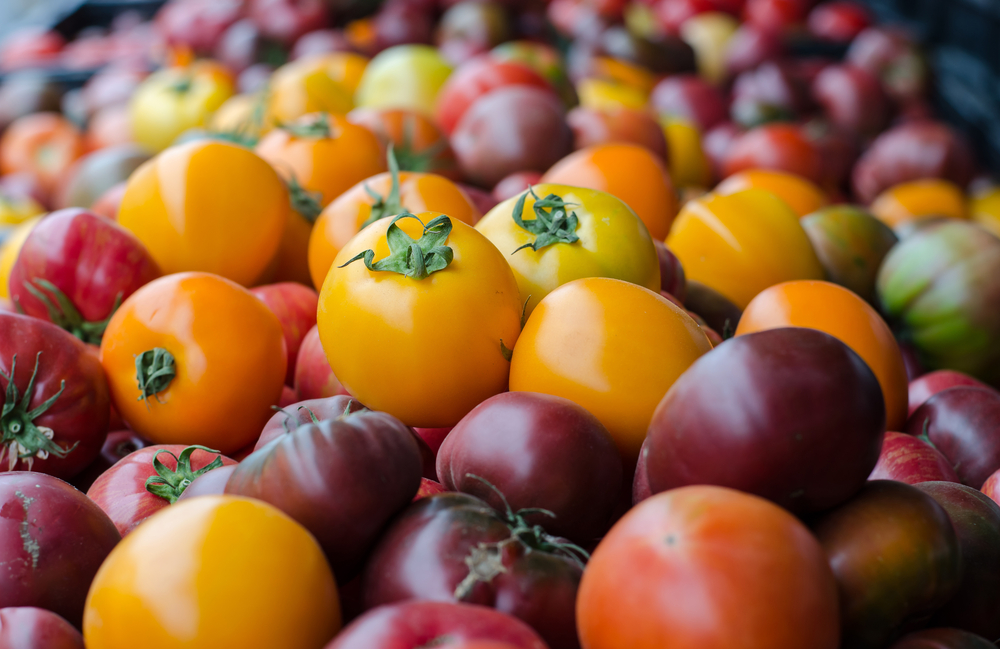Scientists say it’s time to start planning for these scenarios.

These days there is no shortage of research illustrating the threat of climate change on our food system. Mounting studies have shown that rising temperatures will take a serious toll on agriculture and farmers will have to shift to deal with what’s to come.
In California, which accounts for 40 percent of the country’s organic produce, a group of scientists with the Lawrence Berkeley National Laboratory has examined the effects climate change will have on five main crops between 2045 and 2049. Their research analyzed lettuce, broccoli, carrots, tomatoes and cantaloupe, which are produced more in California than in any other state, and shows that some adaptations will be possible to grow some but not others.
Cool season crops like broccoli and lettuce could actually have their growing season extended in the state, according to researchers. This is because climate models showed a slight increase in winter temperatures, which would be above both crop’s minimum temperature threshold, allowing them to be grown into the winter by mid-century. So lettuce, for instance, which has a growing season that historically runs from September to December and February to April, could be grown from November to March in 30 years.
Warm season tomatoes didn’t fare as well. Based on projections, scientists believe the warm season will become too warm, as tomatoes have been historically grown into the summer. It will be likely that farmers who want to continue growing these varieties will have to move to milder climates, researchers say, as the crops need four consecutive months to grow. Summer months in the future will be too hot for the crops to thrive. New growing seasons researchers proposed from March to September and October to January, do not accommodate the current needs of this crop. The study shows that Californian farmers who grow tomatoes could face up to a 66 percent deduction in available agriculture land due to warming temperatures.
Alison Marklein, a biogeochemist at the University of California and lead author of the study, says that governments and the agricultural industry will need to start planning now to deal with the challenges farmers will likely face.
“California produces the majority of nutritionally dense crops for the country, so the security of our food system really depends on the ability of California to keep producing these crops,” she says. “It’s imperative that we start planning for these scenarios now so we’re not hit with a curveball we could have planned for.”
Marklein says researchers will need to start looking into farming practices that could extend growing seasons or allow for more food to be produced in a changing climate. She says more irrigation on farms, for example, could allow tomatoes to still grow in rising temperatures, as it has the potential to alleviate some heat effects.
She says there will be more competition for land in the future and it will be important to gather more specific information on exactly where and how much of these crops can be grown in a way that will ensure that producers in California can continue to feed the nation.
The author may want to re-check the “extended” growing season for lettuce and broccoli. The article cites a current growing season of 7 months (Sept to Dec & Feb to Apr). The so-called “extended” growing season is shown to only cover 5 months (Nov to Mar). That should result in more expensive lettuce – or a need to plant a less sensitive crop.
Farmers will have to grow different crops- sorry to say. Irrigation in a region that is already ravaged by drought, should not be the solution. Perhaps California govt will offer land swapping with other land owners in regions that can better support crops that utilize considerable water quantities.
World wide- we need to evaluate our crops, trade practices and supply and demand. Grow what is feasible per region. This can Reduce climate refugee migration, reduce food deserts, redirect supply chains, change global water usage.
Maintaining optimal soil water, nutrients, and oxygen in crop root zones while irrigating with 35 to 43% less water is essential for enabling the highest crop resilience to climate change by at least 16 crops field-tested in AZ, CA, MI, and TX. This soil Michigan State University engineered, crop and soil sciences-modeled, peer reviewed soil water conservation technology is rapidly demonstrating crop resilience to drought in China, Iraq, Kenya, and Zimbabwe.
Alvin Smucker, Ph.D
Hydropedology Biophysics
Professor Emeritus
Email: smucker@msu.edu
Perhaps indoor hydroponic farms can replace some of the soil-grown tomatoes and lettuce. Both tomatoes and lettuce are currently grown indoors in California using less water than the equivalent production of soil-grown crops. But I don’t know if warmer temperatures would make the indoor operations (particularly greenhouses) too hot.